The role of a teacher is to plan and implement learning experiences that help students to construct knowledge, understand and make sense of the world (Killen, 2009). There are many factors to consider when designing a learning experience but the most important is the consideration as to how students’ best learn (Marzano and Pickering, 1997). There has been much research as to how people learn best and it is my belief that the theory of connectivism (Siemens, 2004) is most relevant to the “digital natives” (Prensky, 2001) of the twenty-first century.
Connectivism is a learning theory which recognises that there is far too much knowledge for one person to find, understand, remember and apply, therefore people need to connect to the world (Wdrexler, 2008).Connectivism has been labelled “the learning framework of the “digital age” as people in today’s society heavily rely on technologies to communicate and learn (Siemens, 2004).
If teachers want to create lessons based on learning theories, proven relevant to their students, they have no other option than to use technology within the classroom. This type of learning is known as e-learning. E-learning is any learning that occurs whilst using electronic devices (Garrison and Anderson, 2003). Electronic tools that facilitate and enhance learning can include “internet-based learning delivery packages, CD-ROM, online video conferencing, websites or email” (Ministry of Education, 2009). The follow synopsis summarises my findings of analysing various electronic tools which can be used within a primary classroom.
Access and gain information
There is so much information available to people today and much of it can be accessed within a matter of seconds via the internet (Eisenberg, 2001).This can be both positive and negative. Much of the information accessible is not acceptable for children to be viewing or relevant to what they need. I recently blogged about
cyber safety, and I found some excellent programs which are tools to teach children how to be safe on the internet. This is a skill that needs to be taught as most children do not know or consider the dangers on the “other side of the screen”(Tapscott, 2009).
Finding relevant information is also another factor when using the internet. The Big6, is a set of “skills and understandings that people use to find, process, and use information effectively” (Eisenberg, 2001). A
conversation, that I had with a peer, helped me to see the benefits of teaching this process in my class. The six step process, which does not have to be linear, is 1. Task Definition, 2. Information Seeking Strategies, 3. Location and Access, 4. Use of Information, 5. Synthesis and 6. Evaluation. When gaining and accessing information, students are mainly focusing on steps two, three and four. Electronic tools to assist students in finding information, through the Big6 process include reading, viewing and interpreting
credible websites, digital videos, such as
YouTube and teacher created sources such as Vokis and
podcasts. My blogs go into some detail about those tools, however, I am going to focus on YouTube.
YouTube is a website which contains millions of digital videos created by many people all over the world (Remenyi, 2007). YouTube is very beneficial for visual and auditory learners as the data and information presented is in a video containing moving and/or still images, music and/or speech and sometimes writing (Remenyi, 2007).This type of tool couldn’t be made by a teacher as they would never have the time to create such a variety of videos, nor would students see the variety of movie making styles. There are access restrictions in various schools; however it can be avoided by embedding the YouTube clip into a blog – accessible in Education Queensland schools. I personally have found some YouTube videos to be very educational, as posted on my blog, and I believe that students would be engaged and learn through this tool.
Consolidate and refine information
When students receive new information, they must actively do something in their heads in order to understand, consolidate and refine it (Marzano and Pickering, 1997, p. 51). In order to do this, learners must organise newly found information. Organising information is important as students identify relevant knowledge and see possible relationships and patterns (Marzano and Pickering, p. 61). Brady (2006) states that “Graphic organisers assist students to organise their understandings and represent them diagrammatically” (p. 67).Therefore, when considering ICTs, online concept mapping tools are a great way for students to consolidate and refine information.
On my
blog I discussed two different mapping tools, but my favourite was
bubbl.us. I found bubbl.us visually appealing and easy to navigate. There are important links to cognitive thinking and concept maps as revealed by Novak & Cañas (2008). They state some interesting facts about how concept maps assist our brains in making connections between knowledge and placing it in hierarchical fashion. But the question still arises, can’t I just create a concept map on paper? Well, yes, however I find creating the concept map online most beneficial to my learning. This is because the program allows for easy changes to ideas, there is no rubbing out of pencil to change ideas. The links between concepts and ideas can be altered easily, whereas on paper it could get confusing and the creator/reader may not understand the links. The online concept map is not limited to the size of a piece of paper, the concept map can be however big or small it needs to be. And lastly, I find computers more engaging that writing on piece of paper – that is my learning style.
Transform information to develop new understandings
I think of developing new understandings as the dimension four process, use knowledge meaningfully. This process requires students to engage in higher order thinking rather than reproducing information which meaningless and not beneficial to students (Marzano and Pickering, 1997). Lower order thinking is where students have knowledge and comprehension and can apply certain knowledge. Higher order thinking is when students analyse, synthesis and evaluate information (Atherton, 2010) and this allows them to “solve problems and discover new (for them) meanings and understandings” (Lingard, et al., 2001, p. 19). Higher order thinking should be incorporated into all students’ learning and can be done through questioning and the requirements of certain tasks (Brady, 2006). It is evident that higher order thinking links well to dimension 4, however how does it link to e-learning?
Wikis are a tool which allows anyone to produce a website however, this website can be visited by many and edited by almost anyone. I believe that Wikis are a great tool that provides opportunity to use knowledge meaningfully, develop new understandings and use higher order thinking. For example, a class of grade 7 students, who are learning about World War 2, could create a wiki in small groups, completing certain requirements. These could be according to the level of thinking. 1. Shows knowledge and comprehension of the historical events. 2. Analyses certain decisions made and 3. Evaluate: should the leaders made different choices? What would you choose? Then I would have the students link it back to today’s society, the choices that our armed forces make and have students reflect.
Why a wiki?
Wikis have many benefits, but the key being collaboration and 24/7 access (Department of Education, 2010). Cohen, Manion, & Morrison (2004) state that, “we learn not only by listening passively to the teacher, but by verbalising, by talking, by discussing and arguing” (p. 229). Students who work together to create a wiki can easily express their ideas and opinions at any time. Students can also make contributions to other group wikis which promotes peer assessment. Also, work can be completed at home or at the library, outside of school hours as wikis are an online tool. Another benefit is that teachers have easy access to monitor the progress of a group (Department of Education, 2010).
Present knowledge to an audience
Another theory which incorporates digital technologies is the Engagement Theory. The basis of the theory is that students must be “meaningfully engaged in learning activities through interaction with others and worthwhile tasks” (Kearsley & Shneiderman, 1999). There are three key principles: Relate, Create and Donate. These principles encourage collaboration, creation of a meaningful product and a real life purpose for the product ie. Make a contribution to the wider community through learning (Kearsley & Shneiderman, 1999). In this theory there is a large focus on the final product and how to get there.
In relation to digital technologies, I believe that
Movie maker has great potential to fit well with this theory. In any context, a group of students(RELATE) could create a movie (CREATE) to display their knowledge and help educate others (DONATE). There are many aspects to consider when creating a movie such as content (knowledge to be presented and in what style) visuals, sound, written language and transitions. All these aspects use various technologies such as cameras, microphones, video cameras, music making programs etc which should be used if the ICT expectations are going to be met (The State of Queensland, 2010). Other beneficial presentation tools include
Voki and
crossword puzzle creator. All these tools allow students to present their knowledge in an interesting way through digital technologies, which will motivate the student to complete the task.
The knowledge could be displayed through another form but students would be more enthusiastic about creating a movie, Voki or online crossword as they are digital, multimodal and interactive. As Prensky (2005)prompts, shouldn’t teachers be engaging students rather than enraging them with ‘boring’ tasks and learning experiences?
This leads me to the next important issue, creative thinking. Employers in today’s society are looking for creativity (Helium Inc., 2009), and teachers have a responsibility to facilitate creative learning. Marzano et al.(1988) states that “Creativity takes place in conjunction with intense desire” (p. 24). Therefore, if students are going to be creative thinkers, they need to be given authentic, motivating and engaging tasks. This needs to be done through ICTs as children of the twenty- first century are engaged when using digital technologies (Prensky, 2005).
In conclusion, the Curriculum Corporation(2006) has described the many opportunities that ICT use provides. ICT provides information access in problem solving and decision making, it allows for communication and collaboration in local and global environments, students can creatively produce solutions and develop lifelong learning and thinking skills. I will definitely be using digital technologies within my classroom as it will transform, enhance and support my students’ learning.
See
here for my list of comment conversations and
here for my references.

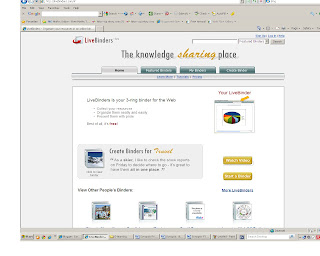
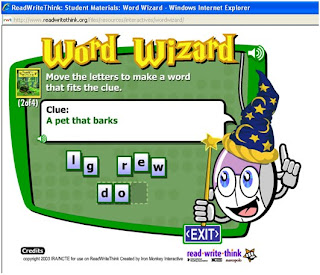
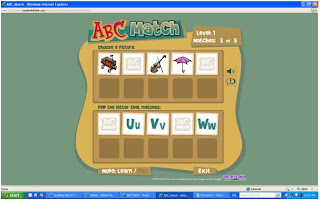
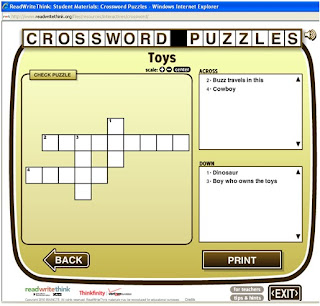



 Image: federico stevanin / FreeDigitalPhotos.net
Image: federico stevanin / FreeDigitalPhotos.net

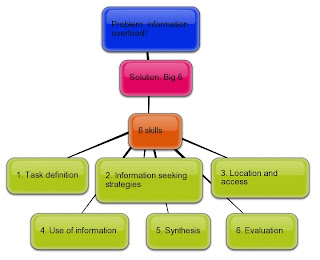
 Although I did have a few hiccups, Movie Maker does create satisfactory movies. This program could be easily used in the classroom. In any subject area, students could create a movie to display their knowledge, it is group user friendly and is a fun way to display information.
Although I did have a few hiccups, Movie Maker does create satisfactory movies. This program could be easily used in the classroom. In any subject area, students could create a movie to display their knowledge, it is group user friendly and is a fun way to display information. 
